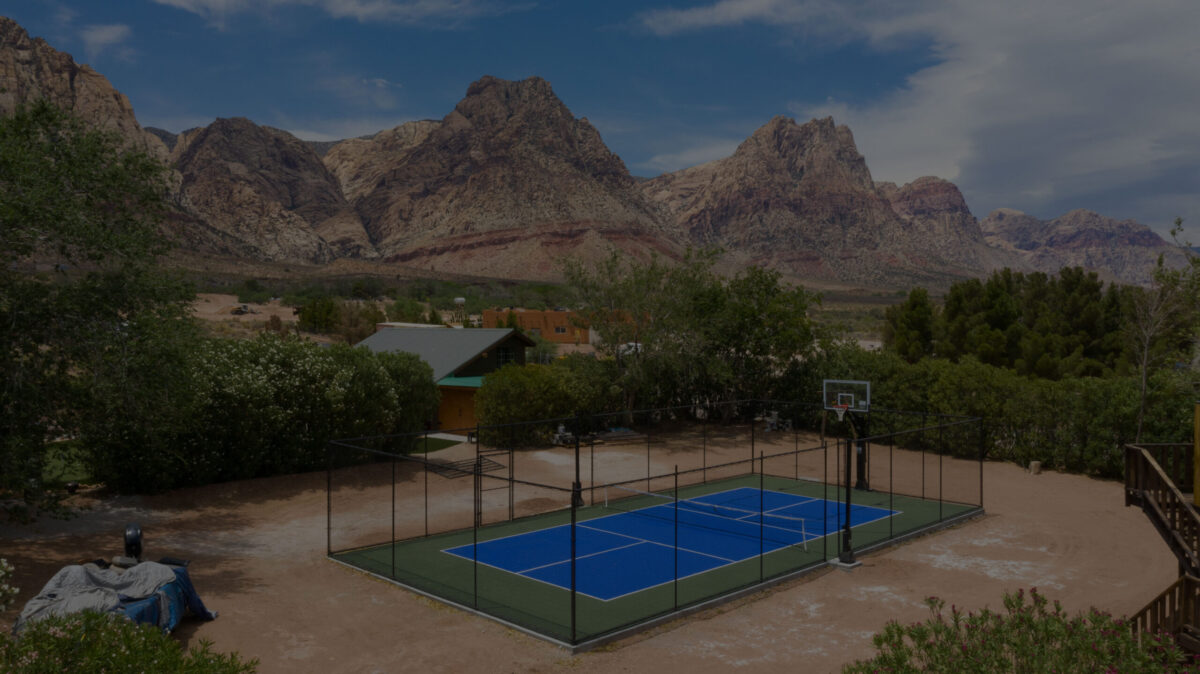


Pickleball has become a favorite pastime for people of all ages. For enthusiasts looking to elevate their game and have more frequent play, creating and maintaining a personal pickleball court can be a rewarding endeavor. This guide is designed to provide a comprehensive overview of the process, tailored especially for beginners interested in pickleball.
Before embarking on your pickleball court project, understanding the standard dimensions is crucial. A regulation pickleball court measures 20 feet in width and 44 feet in length, similar to a doubles badminton court. When choosing a location, consider factors like level ground, adequate lighting, and minimal obstructions.
The playing surface is a critical factor in the quality and safety of your pickleball court. Options range from concrete and asphalt to specialized modular surfaces. Each material has its advantages and limitations in terms of cost, durability, and playing characteristics.
Once the surface is chosen, the next step is laying out the court. Precise measurements are essential to ensure the court aligns with official pickleball standards. This includes not only the overall dimensions but also the net height, service boxes, and non-volley zones (the ‘kitchen’). Proper and visible markings are essential for an authentic pickleball experience.
A pickleball net is slightly lower than a tennis net, with a height of 34 inches at the center. Ensure that the net is durable and weather-resistant, especially if your court is outdoors. Proper tension should be maintained in the net to ensure it meets official height requirements.
Selecting the right paddles and balls is vital. Paddles come in various materials like wood, composite, or graphite, each offering different playing characteristics. Balls are specific to indoor or outdoor play, so choose according to where your court is located.
If you plan to play in the evenings, investing in good lighting is essential for visibility and safety. Additionally, consider installing fencing around the court to contain balls and provide a clear boundary.
Maintaining your pickleball court is crucial for its longevity and playability. Regular tasks include sweeping the surface, checking net tension, and ensuring line markings are visible. For more specialized surfaces, consult with the manufacturer for specific maintenance guidelines.
As you get more involved in pickleball, consider adding enhancements like spectator seating, shade structures, or even a scoreboard. These additions can enrich the playing experience.
Safety should always be a priority. Ensure your court is free of hazards like standing water, cracks, or debris. Also, consider the surrounding environment, such as trees or structures that might impact play.
Building your own pickleball court is not just about having a place to play; it’s about creating a community hub where friends, family, and fellow enthusiasts can gather. Organizing small tournaments or coaching sessions for beginners can be a great way to foster a community spirit around pickleball.
Creating and maintaining your own pickleball court can be a fulfilling project that enhances your enjoyment of the game. It allows for convenient access to play, improves your skills, and serves as a gathering point for like-minded pickleball enthusiasts.
As you move forward to build your own court, remember to focus on the quality of construction, regular maintenance, and creating a safe and enjoyable environment for everyone.
For more information or assistance in creating your dream pickleball court, feel free to Contact Us for a quote. Whether you’re a beginner in pickleball or an experienced player, we are here to help you achieve your pickleball court goals.
Creating your own pickleball court isn’t just about convenience—it offers several unique benefits:
Whether you’re a dedicated player or simply looking to elevate your outdoor space, a backyard pickleball court is an investment that brings both lifestyle and long-term financial value.
With proper planning and expert installation, you’ll have a court that’s both functional and visually appealing.
| Surface Type | Cushioning Level | Durability | Ideal Use Case | Maintenance Needs |
|---|---|---|---|---|
| Concrete | Low | Very High | Permanent backyard installations | Occasional sweeping |
| Asphalt | Medium | High | Budget-friendly residential courts | Sealcoat every 5–7 years |
| Modular Tile System | High | High | All-weather, cushioned play | Low; easy to replace |
| Cushioned Acrylic | Medium to High | Medium | Players seeking joint-friendly surfacing | Recoat every few years |
The choice of court surface impacts the long-term performance, safety, and comfort for players. Cushioned modular surfaces are a top favorite for residential courts due to their flexibility, durability, and low upkeep.
Clean the surface regularly, repair cracks, reseal or repaint lines as needed, and keep the area free of debris and standing water.
Mark a 20’x44’ playing area with a 7-foot non-volley zone (kitchen) on each side of the net and proper service boxes for singles or doubles play.
Post-tension concrete is the best—it’s durable, low-maintenance, and provides a consistent bounce.
Acrylic-coated concrete or asphalt offers ideal traction, ball response, and weather resistance.
Blue and green combinations are most popular because they enhance ball visibility and look professional.
Need help planning or building your custom pickleball court? With decades of combined experience, Legendary Sports Construction specializes in building professional-grade sports courts tailored to your space, style, and performance needs.
Contact us anytime to bring your dream court to life!
Please Provide Your Contact Information and Project Details